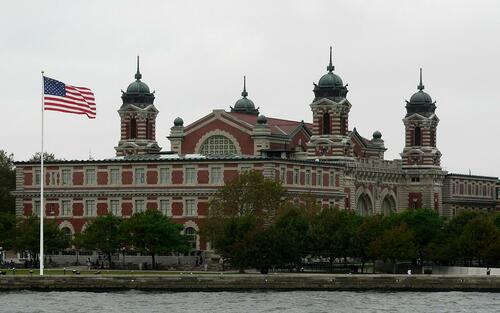Navigating U.S.-China Tariffs: Recent Developments and Market Impacts
Tháng 4 9, 2025Goldman Sachs Shifts Recession Outlook Amid Easing Trade Tensions
Tháng 4 9, 2025The Evolving Landscape of the American Dream: Is It Still Alive?
Recent discussions surrounding the American Dream suggest a profound transformation in its meaning and accessibility. Particularly for younger generations, the traditional milestones once associated with this illustrious ideal—such as homeownership and marriage—are being reconsidered and redefined. According to a significant study from UCLA, a striking 86% of young Americans express a desire to fully realize the American Dream. However, a sobering 60% of them harbor doubts about its feasibility due to escalating financial pressures. This juxtaposition signals a vital shift in the benchmarks of success in contemporary America.
Young Americans: Seeking Balance Over Tradition
The younger population is increasingly prioritizing mental health and financial stability over the conventional ladder of success, which typically emphasizes property ownership and family formation. This shift reflects an evolving understanding of personal fulfillment and success, where emotional and psychological well-being takes precedence. Consequently, the concept of the American Dream is transitioning from a focus on tangible assets to a broader view that incorporates overall quality of life. As finances increasingly dictate personal futures, it becomes evident that the economic landscape plays a crucial role in shaping modern aspirations.
Rising Costs and Economic Strains
A key factor contributing to the skepticism around the American Dream is the dramatic increase in home prices. From 2020 to 2024, home prices surged by approximately 52%, a rise that has significantly outpaced wage growth. This surge in housing costs has made homeownership, once considered a staple of the American Dream, increasingly elusive for many young people. In tandem with this housing crisis, inflation and possible tariffs on construction materials are exacerbating an already challenging economic environment, prompting many to question whether the dream is still within reach.
The Impact of Immigration Policies
Compounding these economic hurdles are restrictive immigration policies that foster a sense of exclusion among both new arrivals and long-term residents. The ideal of America as a land of opportunity is jeopardized when those who seek its promise are met with uncertainty and hostility. These policies deter not only potential contributors to the workforce but also representatives of diverse cultural perspectives that enrich the nation’s fabric. The discussions surrounding immigration underscore the necessity for a more inclusive approach if the American Dream is to remain viable for all its inhabitants.
Economic Policies: A Double-Edged Sword
Furthermore, the economic trajectory of the nation is being intimately affected by protectionist policies. Critics argue that tariffs and other restrictive measures, such as those previously endorsed by former President Donald Trump, may impede economic growth and damage the United States’ global trade relationships. The long-term effects of such policies could significantly hinder opportunities for innovation and prosperity, making it increasingly difficult for the American Dream to flourish in its traditional form.
In summary, while the American Dream is certainly not dead, it is undergoing a substantial transformation. The path toward realizing this dream is fraught with new challenges, as economic conditions and social policies shape the framework of opportunity for current and future generations. As discussions continue to unfold, it is clear that a collective reassessment of what the American Dream means and how it can be achieved is crucial for revitalizing this cornerstone of American identity.
In embracing a more modern interpretation, society may find renewed hope in the possibility of achieving the American Dream—one that resonates with today’s realities and aspirations.

